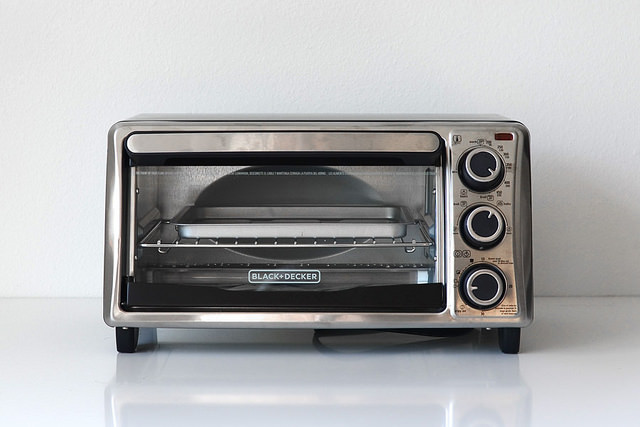
Monday November 15, 2021
By Trevor Ross
 Education
Education
Cannabis infusion is a necessary skill for anyone aiming to cook edibles. Thankfully, it’s also pretty easy to learn with some time and preparation (and preferably an oven).
Previously, we have discussed how to make cannabis-infused butter, which unlocks an array of dishes and baked goods to medicate. This time, we will infuse THC into milk, which can be used to make milkshakes, mac and cheese, or just poured over a bowl of Boo Berry.
In this article we share our recipe for cannabis-infused milk, along with an explanation for how the recipe works, and how to calculate doses.
IMPORTANT: Decarboxylating Cannabis
Before cannabis is infused into anything, it must be “activated” first, through the process called decarboxylation, or “decarbing.” Raw cannabis flower is covered in trichomes containing THCa, which is THC with a carboxyl molecule attached.

This carboxyl group is removed with heat, usually at the moment the flame from the lighter touches it, and then you inhale the converted THC. When cooking with cannabis, that same principle must be applied, but without combusting the cannabis and smoking off the THC. The easiest solution is to decarb your cannabis in the oven.
Instructions for decarbing cannabis are included in the recipe below.
Cannabis-Infused Milk Recipe
Ingredients
1 gal whole milk (3.78L)
⅛ oz ground cannabis

Instructions
- Decarb the ground cannabis in the oven. Preheat the oven to 225° F, and no more than 250° F (107° - 121° C). Spread the cannabis evenly across a foil-lined baking sheet. Bake for 45 mins. The ground flower should come out brown and dry, but not burned.
- Pour the gallon of milk into a saucepan (a pot is fine, but a wider surface area allows for more contact between the milk and cannabis).
- Add the ground cannabis. Simmer for 30 - 60 minutes, stirring frequently to prevent the milk from burning in the pan. Let cool for another 10 - 20 minutes.
- Strain the milk through a cheesecloth to separate the spent cannabis. The milk can be stored as usual until the expiration date it came with, or frozen for up to six months (with diminishing freshness after about 4 weeks).
How This Recipe Works
Once the cannabis has been “activated” through decarboxylation, simmering it in milk is simply a matter of saturating the cannabis in a fatty medium. THC is not water-soluble like salt or sugar, but fat-soluble. THC binds with lipids, which is why it is infused into fatty mediums like butter and oil, and it’s why whole milk is recommended for this recipe. The more fat in the milk, the more THC it can hold onto. Conversely, a skim milk would have far fewer lipids for the THC to bind with. Almond milk can be used, but will have less fat than milks and cream.

Simmering milk can be tricky for novices because it can shift quickly from boiled to burned. Bring the milk up to temperature slowly. Once the edges begin to sizzle with small bubbles, you’ve found a good simmer. Lower than that is fine, especially if you let it sit for the full hour, but try not to let it get much hotter and begin to foam up. It won’t ruin the infusion, but it will eventually affect the flavor of the final product.
How to Calculate Dose
To calculate the milligrams of THC per cup of milk, first calculate the total weight of the weed in milligrams, multiplied by the percentage of THC. For this recipe, we used 3.5g of a modest 13% strain.
Calculating Dosage
3.5g x 1000 = 3500 kg
3500 kg x 0.13 = 455 mg total THC
Now divide the total THC across cups of milk in a gallon.
455 mg THC / 16 cups milk = 28.4mg THC per cup of milk
Equipped with these equations, you can easily adjust the potency of the final product by reducing the cups of milk, increasing the THC percentage, or simply increasing the amount of cannabis.
Conclusion
Cannabis milk can be a very versatile infusion method. From mellow milk for cocoa, to a double-barreled shot of coffee creamer, countless concoctions are possible with the fundamentals of this recipe.
Frequently Asked Questions
How do you make cannabutter?
Here is PotGuide’s recipe for cannabutter.
Is cannamilk better than cannabutter?
Neither is better or worse than the other, but each provides the ability to cook cannabis into different dishes. Cannabis-infused butter and milk can be substituted anywhere else you would use regular butter or milk.
Can you make edibles with cannabis infused milk?
Yes. Cannabis-infused milk can be substituted for regular milk in any recipe that calls for it.
Can you infuse almond milk with cannabis?
Yes. Almond milk has enough lipids to absorb some THC, but not as much as whole or 2% milk.
What’s your favorite edible to make with cannabis milk? Share in the comments.
Photo Credit: Imoflow (license)







